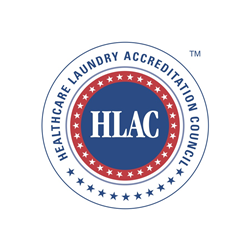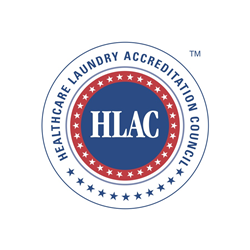
HLAC is a leading nonprofit organization that inspects and accredits laundries that process reusable textiles for hospitals, nursing homes, and other healthcare facilities.
“When processed and used according to standards, high-quality reusable microfibers cleaning products for use in healthcare should last for more than 100 use and processing cycles.”
PLANFIELD, Ill. (PRWEB)
May 17, 2021
The second report in a series from the Healthcare Laundry Accreditation Council (HLAC) provides an overview of the proper processing procedures required to preserve the advantages of reusable microfiber cleaning products, specifically wipers and mops. Available at HLAC’s website, the free downloadable report is a useful resource to help healthcare professionals understand those processing requirements that are different from those of bulk healthcare linen items such as sheets, blankets, terry, and patient gowns.
The report, “Processing Reusable Microfiber Cleaning Products for Use in Healthcare,” warns that if processed incorrectly, high-quality reusable microfibers will lose their cleaning performance advantages and risk a healthcare environment that is not cleaned properly.
The report is written by Gregory Gicewicz, a past president of HLAC who currently serves as HLAC inspection committee chair. Gicewicz is also president & CEO of Sterile Surgical Systems, a full-service accredited healthcare laundry and reusable sterile surgical textile pack manufacturer. HLAC is a leading nonprofit organization that inspects and accredits laundries that process reusable textiles for hospitals, nursing homes and other healthcare facilities – based on the highest, professionally recognized standards for patient safety and infection prevention.
According to the report, “When processed and used according to standards, high-quality reusable microfibers cleaning products for use in healthcare should last for more than 100 use and processing cycles.”
Standards reviewed in the report include:
- Soil sorting: Because reusable microfibers have unique processing requirements, they must be handled separately from other textile items.
- Washing: Accurate washing of reusable microfibers for cleaning ensures that they maintain their designed physical properties and perform as intended for their designed life cycle.
- Drying: Most premature damage to reusable microfibers for cleaning occurs during drying.
- Inspecting and packaging: Because microfiber products have such a strong positive charge, they will easily attract hair and dirt; inspectors should pay close attention for this on cloths and the backs of mops. Finished packages and bulk loose microfibers must be packaged in a suitable material (e.g., placed in covered carts or wrapped in plastic) to avoid contamination during transport to the customer.
Share article on social media or email:

